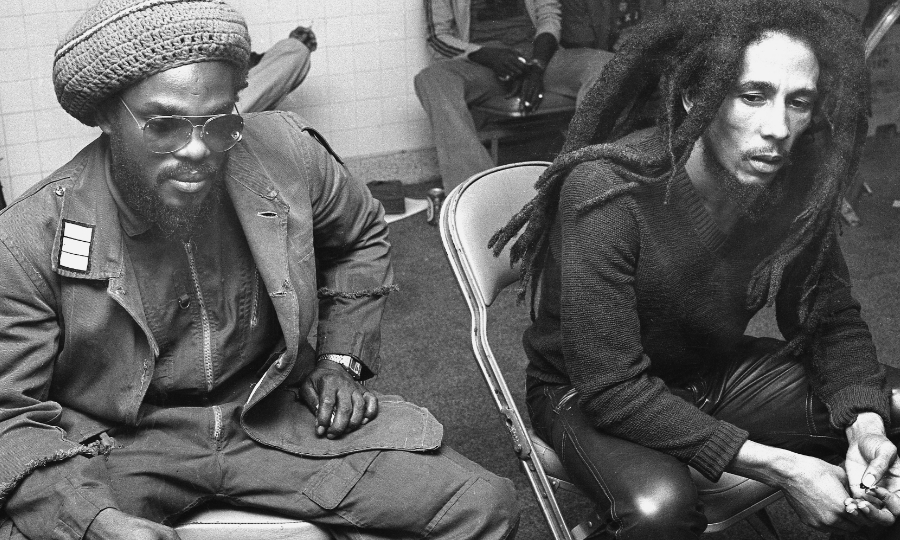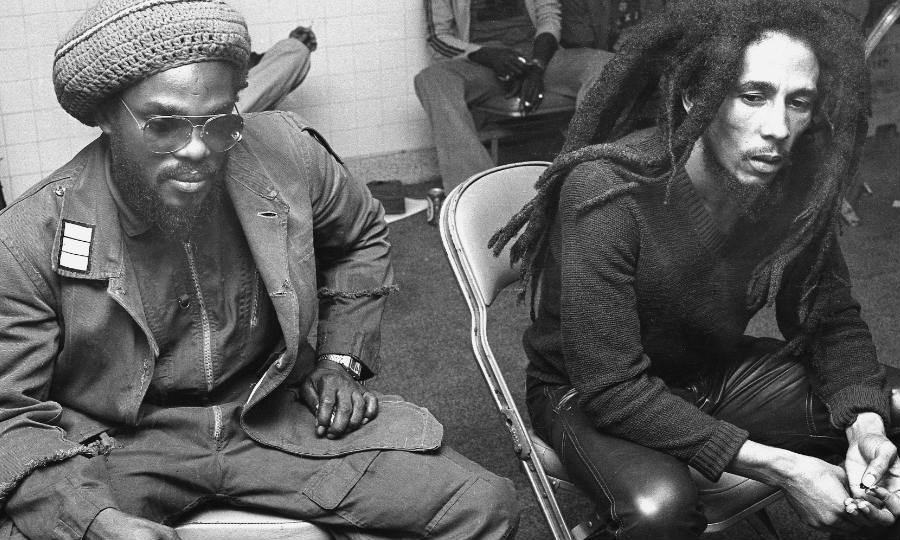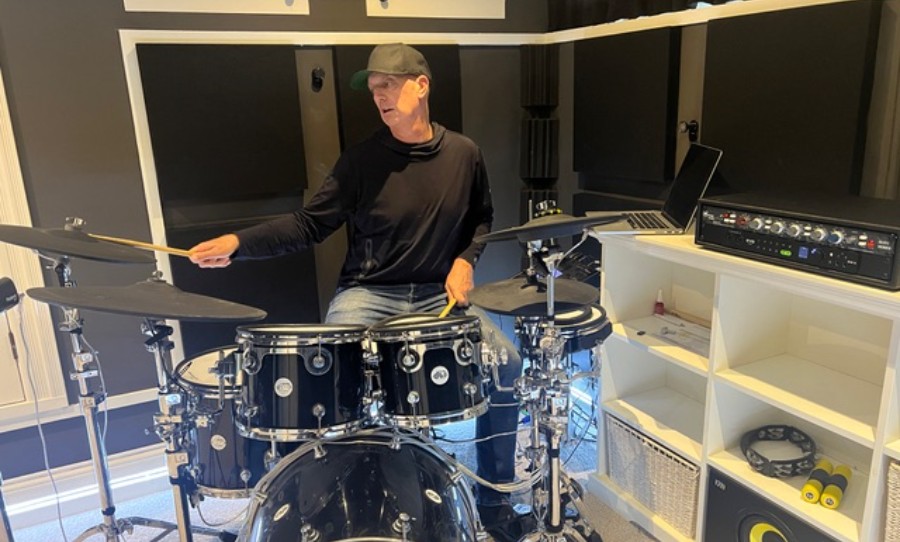On the 6th of February, 1945, Bob Marley was born on an idyllic farm in St. Ann Parish, Jamaica. He spent his early childhood there before moving to Trenchtown with his mother at the age of 12 and earning the nickname ‘Tuff Gong’.
Bob Marley and Neville Livingston, aka Bunny Wailer, were childhood friends in St Ann at Stepney Primary and Junior School. When Marley’s mother had a child with Bunny Wailer’s father they began living together in Trenchtown. The duo began studying the musical styles of RnB and rock from United States radio stations whose broadcasts reached Jamaican shores. Coupled with the influential rise of ska, Marley soon found himself in a vocal group with Bunny Wailer, Peter Tosh, Beverly Kelso and Junior Braithwaite.
While Marley was predominantly focused on his vocal harmonies, local musician Joe Higgs – one of Jamaica’s first indigenous recording artists – began to teach young Bob how to play guitar.
Amidst the poverty Bob Marley also learnt to fend for himself on the harsh streets of Trenchtown, soon earning a reputation as a competent fighter. His fierceness and ability to take hits earnt him the ‘Tuff Gong’ moniker.
This is the story of the birth of Tuff Gong Records and its five most essential albums.
Named after a spiritual Rastafarian leader, Bob Marley’s Tuff Gong records broadcast Reggae to the world with these 5 amazing albums.
The Birth of Tuff Gong
Despite Bob Marley answering to the sobriquet ‘Tuff Gong’ for his resilient skill as a street fighter, it would actually become more appropriate than any could have foreseen. Inspired by religious preacher Leonard Percival ‘The Gong’ Howell, Marley would later embody the spiritual awareness and Rastafarian ideals of his predecessor.
Howell was known by many as ‘The First Rasta’ and despite the government imprisoning him for two years and ruthlessly trying to snuff out his support, The Gong went on to garner a worldwide faith inspired by the struggle against oppression.
Bob Marley formed Tough Gong records in 1965 at 56 Hope Rd in Kingston. It was not only his office but his home and Marley used it as a launchpad to create and record some of the most influential reggae music of all time.
Leonard Howell passed away on 25 Feb, 1981 followed by Bob Marley almost two months later to the day.
Essentials
All Albums by Bob Marley & The Wailers
Natty Dread (1974)
While Catch A Fire is reggae’s most important album, Natty Dread is reggae’s finest. This was Marley’s first album without Peter Tosh and Bunny Wailer, and his first with vocalists the I Threes. While popular music was heading towards its soporifical disco apex, Marley released Natty Dread and professed and lyrical acuity and profundity unmatched by his contemporaries.
As he revealed his spirit Marley assumed the mantle of prophet abandoned by his ’60s forebears like Bob Dylan. No Woman, No Cry is the albums crowning jewel though it wouldn’t get its definitive treatment until a year later on Marley’s first live album.
Rastaman Vibrations (1976)
Natty Dread’s studio follow-up added powerful keyboard blasts and stabs assimilating further into the mainstream rock aesthetic of the era. Surprisingly the result was Marley’s only Top 10 Album and his only charting single with Roots, Roch Reggae peaking at #51.
Like many of Bob Marley’s greatest albums, it offers a fluid amalgamation of political and spiritual offerings. Short on some of the word anthems of his most popular works, Rastaman Vibrations offers its greatest strength in the quiet moments and continued to fan the flames of Marley’s untouchable legacy.
Live! (1975)
Recorded at London’s iconic Lyceum Ballroom on the final U.K. leg of the Natty Dread tour, no other concert captures the magnetic presence of Bob Marley quite like Live!
The addition of lead guitarist Al Anderson during the Natty Dread sessions highlights the Wailers seamless transition into Western rock consciousness. A truly transcendent rendition of No Woman, No Cry, and the crowds symbiotic, tidal relationship with Marley made Live! one of the greatest live albums of the era.
Exodus (1977)
In December 1976, Bob Marley and his wife and son were seriously wounded by gunshots in a failed assassination attempt. In response they left Jamaica for London and Marley recorded Exodus capturing the experience in an unmatched blend of political dissension and mortal woes.
All the hits are here with Jamming, Three Little Birds and One Love filling out Marley’s milestone work. Equal parts seriousness, peace, and the best of both.
Catch A Fire (1973)
This was the album that started it all and reggae’s crowning achievement. All songs were recorded by the Wailers before label head and producer Chris Blackwell overdubbed instruments by various outsiders to make it more palatable to Western ears – most notably Muscle Shoals session player Wayne Perkins on guitar.
The result was one of the group’s breakthrough albums and one of the most defining albums of the ’70s. While other albums contain bigger hits, Catch A Fire remains the most pivotal work in setting Bob Marley towards becoming one of the most celebrated songwriters of all time.



